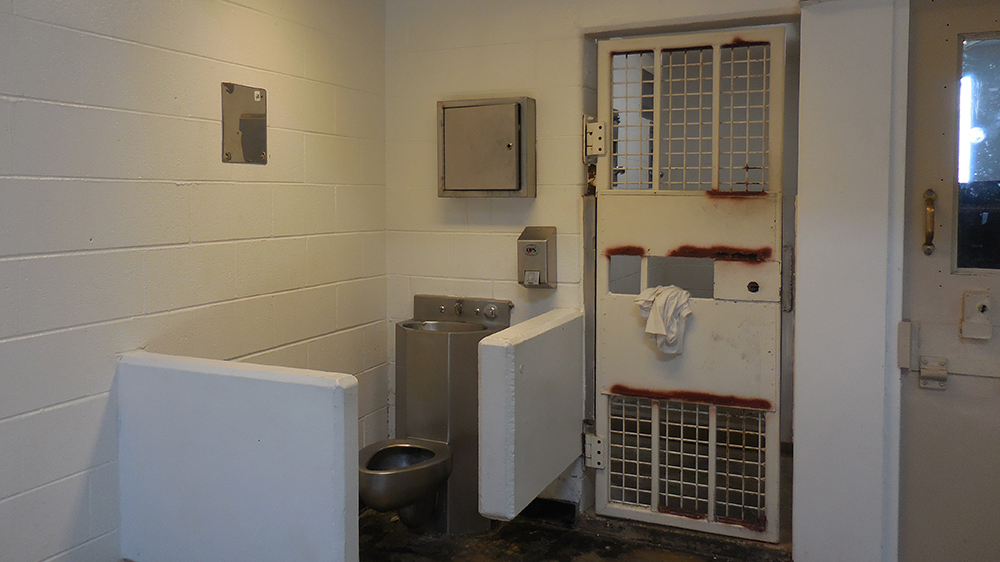![]() The fast-moving COVID-19 pandemic is shining a light on the vulnerability of youth in our nation’s approximately 2,000 juvenile correctional facilities who face daily threats to their safety and well-being. The current crisis is exacerbating long-standing health hazards in youth lock-ups, placing tens of thousands of young people at risk of harmful isolation and serious illness.
The fast-moving COVID-19 pandemic is shining a light on the vulnerability of youth in our nation’s approximately 2,000 juvenile correctional facilities who face daily threats to their safety and well-being. The current crisis is exacerbating long-standing health hazards in youth lock-ups, placing tens of thousands of young people at risk of harmful isolation and serious illness.
In California’s state youth correctional facilities, the Division of Juvenile Justice (DJJ), youth already face high rates of violence, an overreliance on isolation and inadequate health care. Now, DJJ’s feeble efforts to contain COVID-19 leave youth and their families filled with fear as they await the likely spread of infection inside the institutions.

Maureen Washburn
COVID-19 has already arrived at DJJ, with three confirmed cases among staff at the Northern California Youth Correctional Center (NCYCC), where the majority of DJJ’s youth are confined. As the virus spreads, it is likely to move quickly through the population of more than 700 youth and 1,000 staff. This will have devastating effects on families and communities outside the facilities’ walls.
Crowded facilities, poor health care place youth at risk
A failure to employ social distancing, provide prompt medical care or protect vulnerable populations could have catastrophic consequences for DJJ youth. Yet the system has responded sluggishly to the COVID-19 crisis.
DJJ’s institutional design, which places youth in close quarters, sometimes with shared bathrooms and tightly spaced beds, will allow pathogens to spread far faster than they can be detected. Social distancing, which has been the first line of defense against the new coronavirus, is not being properly implemented at DJJ. For example, DJJ still houses many youth in open dormitory units, where dozens of young people share the same sleeping areas and bathroom facilities.

Renee Menart
Youth who are ill or injured at DJJ rarely see an outside physician, often receiving treatment on-site or no care at all. Some staff are dismissive of youths’ medical needs and allow a young person’s condition to worsen before referring them to medical services. In fact, a youth who was recently released from DJJ said, “If you weren’t bleeding or dying, you wouldn’t get medical care.”
Although DJJ administrators have identified a significant number of medically vulnerable youth, they are not yet eligible for early release or other protections. As California’s adult prisons reduce population density by releasing thousands of individuals who are nearing their parole dates, DJJ has not undertaken any systematic release of young people, despite advocates’ calls to action. Every day that we wait to address DJJ’s shortcomings increases the risk to some of our state’s most vulnerable youth.
DJJ’s historical pattern of neglect continues
For years, the Center on Juvenile and Criminal Justice (CJCJ) has served as a DJJ watchdog, routinely touring the facilities, interviewing youth and collecting data on conditions. CJCJ’s most recent report, “A Blueprint for Reform: Moving Beyond California’s Failed Youth Correctional System,” reveals DJJ’s fundamental failings. It calls on state leaders to take immediate action to safeguard youth and outlines a process for phased closure of DJJ facilities, which has since been echoed in Gov. Gavin Newsom's proposed state budget.
DJJ’s record of abuse stretches back for decades. Despite a history of youth suicides, staff sexual abuse, staged fights and appalling living conditions, state leaders have never taken the bold but necessary step of closing the institutions. California’s expert policy groups, including the Legislative Analyst’s Office and the Little Hoover Commission, have previously called for closure of DJJ altogether. However, California has instead relied on a series of Band-aid fixes, including name changes and administrative reorganizations, in a futile attempt to mend what is broken at DJJ.
Time and again, the system has returned to its fundamental state of violence and abuse. Last year, CJCJ investigated conditions at DJJ following the end of the Farrell lawsuit, a 12-year-long lawsuit filed against the agency for its inhumane treatment of youth. The latest research finds that this pattern of mistreatment continues.
Damage at DJJ can have devastating lifelong impacts
Today, youth experience frequent violence — approximately 31 youth are involved in violent incidents each month for every 100 in the institutions. The facilities are structured like prisons, confining more than 150 youth each, well above modern standards. This greatly increases rates of interpersonal conflict among youth and use of force by staff. Violence impacts every youth placed at DJJ, whether directly or by the culture of fear created due to its rampant threat.
Isolation at DJJ further harms youth in the state’s care. DJJ facilities are located in remote areas far from youths’ communities, making them inherently traumatic. Nearly half of youth at DJJ are placed in facilities over 100 miles away from their home communities. Youth have few opportunities to connect with loved ones, a problem exacerbated amid COVID-19 risks, and some even go years without a visit. Youth routinely experience isolation from their peers within facilities, which negatively impacts their mental health.
Confinement takes an extreme psychological toll, but DJJ fails to address youths’ mental health needs. Psychological services are reserved for those with serious mental health diagnoses, leaving the majority of youth with little support. This narrow structure of services in DJJ’s prisonlike environment worsens youths’ mental health and results in shockingly high numbers of suicidal incidents, such as suicide attempts or youth placed on suicide watch. Though DJJ now describes its treatment of youth as “trauma-informed,” suicidality has doubled in the facilities since 2015, pointing to institutional failings to address mental health needs.
States must act to now to reduce populations, protect youth
COVID-19 is a chilling reminder of our responsibility to protect youth in confinement. California and states across the U.S. must act now to remove youth from dangerous correctional facilities. As a first step, these facilities should end new admissions, ensuring that no new youth are brought into the population. Next, they must reduce the number of youth in each facility through early releases. Those who are medically vulnerable and those who are close to their parole date should be prioritized, with consideration given to all youth for early release. Correctional agencies must then partner with community providers to carry out release plans and ensure the well-being of young people during reentry.
Our nation’s most vulnerable youth are filled with fear as they sit in locked cells awaiting what seems to be an inevitable infection. We must take decisive and coordinated steps to stand up for young people in the juvenile justice system. There is still time. The time is now.
This column has been updated.
Maureen Washburn, policy analyst, and Renee Menart, communications and policy analyst, at the Center on Juvenile and Criminal Justice are co-authors of “A Blueprint for Reform: Moving Beyond California’s Failed Youth Correctional System.”
